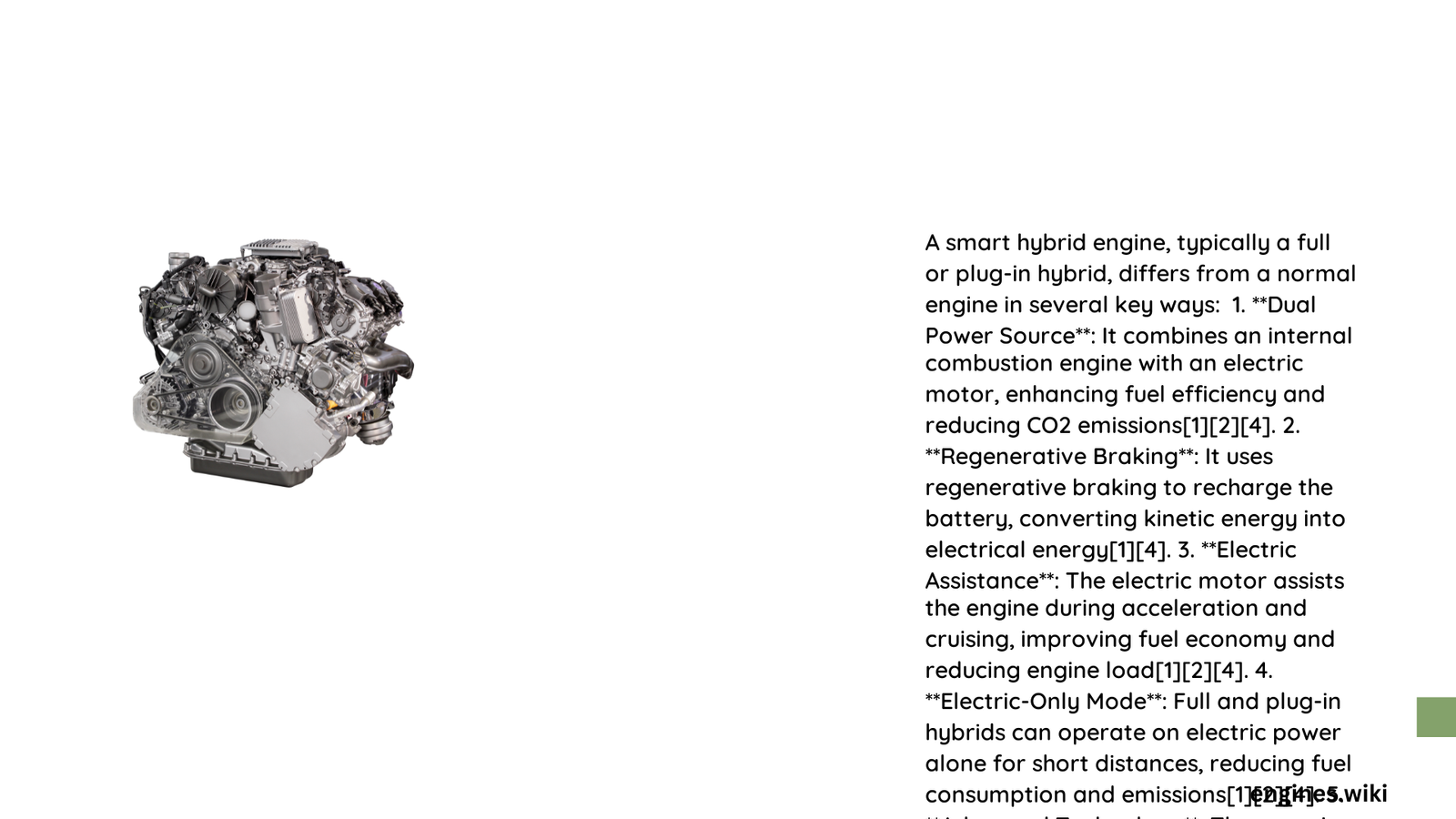Smart hybrid engines represent a revolutionary approach to automotive propulsion, fundamentally differing from traditional internal combustion engines through advanced technological integration. These sophisticated powertrains combine electric motor capabilities with conventional fuel-based mechanisms, offering superior efficiency, reduced emissions, and enhanced performance compared to standard engines. The core distinction lies in their ability to dynamically manage power sources, seamlessly switching between electric and fuel-powered modes to optimize energy consumption and driving experience.
What Makes Smart Hybrid Engines Different from Normal Engines?
How Do Technological Configurations Vary?
Smart Hybrid Engine Components
- Integrated Power Systems
- Electric motor
- Large capacity battery pack
- Advanced power management control unit
- Regenerative braking mechanism
Normal Engine Components
- Traditional Mechanical Setup
- Single internal combustion engine
- Standard 12V battery
- Mechanical transmission
- No electric power integration
What Performance Metrics Distinguish These Engines?
| Performance Parameter | Smart Hybrid Engine | Normal Engine |
|---|---|---|
| Fuel Efficiency | 20-25 kmpl | 10-15 kmpl |
| CO2 Emissions | 70-100 g/km | 150-250 g/km |
| Power Output | Combined ICE + Electric | Solely ICE-based |
How Do Operational Mechanisms Differ?
Smart hybrid engines utilize a sophisticated power management system that allows:
– Seamless transition between electric and fuel power
– Energy recuperation during braking
– Reduced fuel consumption
– Lower environmental impact
Normal engines operate through traditional combustion processes:
– Continuous fuel consumption
– Limited energy recovery
– Higher emissions
– Mechanical power generation
What Are the Technological Advantages?
Smart Hybrid Engine Benefits
- Enhanced fuel economy
- Reduced carbon footprint
- Lower operational costs
- Improved acceleration
- Quieter urban driving
Normal Engine Limitations
- Higher fuel consumption
- Greater environmental impact
- Limited power optimization
- Higher maintenance requirements
- Less adaptable performance
Technical Efficiency Comparison
Smart hybrid engines demonstrate remarkable efficiency through:
– Advanced battery technology
– Intelligent power distribution
– Regenerative energy capture
– Sophisticated electronic control systems
Normal engines rely on traditional mechanical principles:
– Direct fuel combustion
– Mechanical energy conversion
– Limited technological adaptability
– Standard transmission mechanisms
Economic and Environmental Implications
Smart hybrid engines represent a significant technological leap, offering:
– Reduced long-term ownership costs
– Lower environmental degradation
– Enhanced driving experience
– Future-ready automotive technology
Conclusion

The difference between smart hybrid engines and normal engines extends beyond mere mechanical variations, representing a fundamental shift in automotive engineering philosophy. These advanced powertrains showcase how technological innovation can transform transportation’s environmental and performance landscape.
Reference:
- https://yocharge.com/faq/difference-between-smart-hybrid-pure-electric-cars-bev/
- https://www.youtube.com/watch?v=i7OAvgOvZnQ
- https://gomechanic.in/blog/the-key-differences-between-hybrid-and-mild-hybrid/
